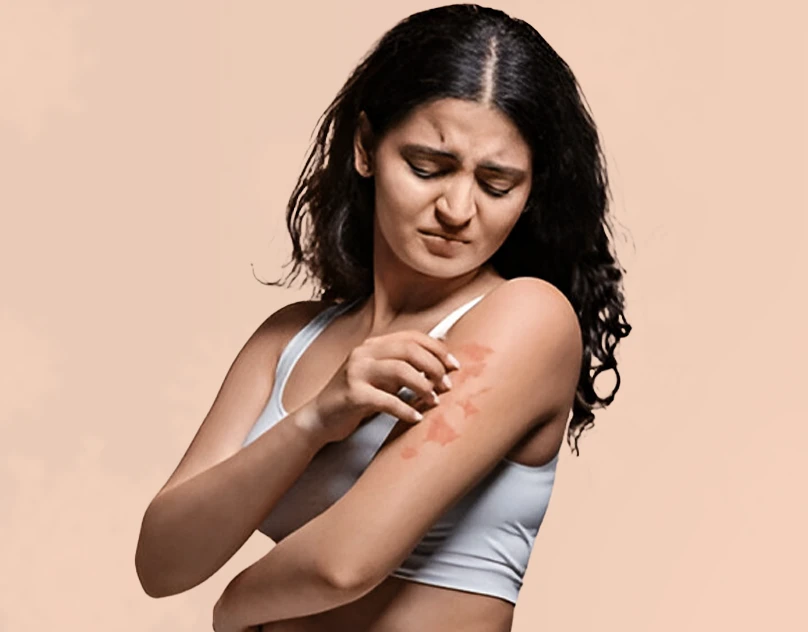

How to Avoid Fungal Infections, Know Some Tips, Tricks, and Genetic Insights
Fungal infections are known to be common health concern. It is affecting millions from around the world. While some mild things that can lead to discomfort and, in some of the cases, it can lead to severe complications. This goes especially for individuals with weakened immune systems.
Here you will be able to delve into effective strategies on how to prevent fungal infection. Get some practical advice and highlighting the crucial role of personal hygiene and emerging genetic insights to the issue.
What Exactly Fungal Infections Mean?
Fungi are ubiquitous organisms. Most of the time, they are known to coexist harmlessly with us.
However, just right under some uncommon conditions like warm, moist environments, compromised immune systems, or breaches in the skin barrier. Hence, knowing how to prevent fungal infections is a must and can help many.
Some of the common fungal infections are mentioned below:
- Athlete’s Foot (Tinea Pedis): It is usually characterized by redness, itching, peeling skin, and at times might be caused due to blisters. This issue is commonly affected at the spaces that are between the toes.
- Ringworm (Tinea Corporis, Capitis, or Cruris): Despite its name, ringworm like condition is not caused by any worm. It is a fungal infection which is caused due to red, itchy, scaly, circular rash. This can occur on any body part like (tinea corporis), scalp (tinea capitis), or groin (tinea cruris, called as jock itch).
- Nail Fungal Infections (termed as Onychomycosis): The affecting fingernails or toenails can all lead to condition like discoloration, thickening, and crumbling of the nail.
- Yeast Infections (known as Candidiasis): It is caused by the Candida species of yeast, such infections might be affected as various parts of the body. This shall include the mouth, vagina, and skin folds.
Prevalence of Fungal Infections in India
The issue of fungal infections just like some other things shall pose a significant public health burden in India. This is a systematic review which shall estimate approx. 60 million Indians (4.1% of the population). They are all seen being affected by some severe fungal issue.
Some of the common conditions including recurrent vulvovaginal candidiasis are well estimated to over 24 million cases. This count goes as per the annual count which is calculated and helps to figure out how to prevent fungal infection.
How to prevent fungal infection just like some tinea capitis. It can occur among children and in some of the areas with poor hygiene kind of thing.
These statistics might all gradually underscore importance on knowing as how to prevent condition such as fungal infection where some timely intervention can help.
How to Prevent Fungal Infection With Practical Strategies
The answer to how to prevent fungal infection are largely revolving around sustaining good hygiene. It also includes managing moisture, and at the same time adopting some of the healthy lifestyle habits.
Sustaining Excellent Personal Hygiene:
- Daily Bathing: Clean yourself daily, have good warm bathe every day, and considering showering twice a day. While you might sweat heavily or engage in some of the strenuous activities. Under such situation getting yourself clean can help in removing sweat and dirt completely. This can all help in creating a breeding ground for fungi.
- Thorough Drying: Just as you bath, dry your skin wholly. Make sure that the areas prone to dampness like between toes, in skin folds, and the groin area are dried well. Patting rather than rubbing is preferred.
- Separate Towels: Make sure to use a clean, dry towel separately for each family member. Wash towels daily, especially if someone in the household has some kind of fungal infection. This can help in preventing the spread of spores.
- Wash Clothes Regularly: Never forget to clean clothes and then wear them. Particularly undergarments and socks. Wash the clothes, especially those worn while performing physical activity. Use warm water to wash them as they can effectively kill fungal spores. Dry clothes in direct sunlight, as it can act as a natural disinfectant.
Manage Moisture and Breathability:
- Loose-Fit Clothes: Choose loose-fitting clothes that are made from natural, breathable fabrics just like some cotton or linen. These materials shall allow air circulation, which can lower sweat and dampness. Do not wear tight clothes like jeans, leggings, and jeggings. Such tight clothes can trap moisture.
- Appropriate Footwear: Wear a kind of breathable shoes. You must prefer shoes that is made of leather or canvas. Never wear the same pair of shoes every day, which can allow them to air out and dry up completely.
- Socks: Alteration in socks daily and choose socks that are all made of moisture-wicking materials. Choose cotton or wool based socks. When your feet sweat excessively, make sure to change socks multiple times a day.
- Public Spaces: Wear sandals or flip-flops while using any of the public showers, locker rooms, swimming pools. Also, during the gym. This can help in avoiding some direct contact with fungal spores that thrive in such damp environments.
Dietary Considerations:
While considering diet is not a direct cause or cure for fungal infections, there are various studies that have all suggested specific dietary habits. It can all influence the body’s susceptibility:
- Probiotics: Incorporate some of the probiotic-rich foods (including yogurt with live cultures) or probiotic supplements. They are known to introduce some beneficial bacteria that can all help in sustaining a healthy microbial balance in the body. This can potentially inhibit the overgrowth of fungi like Candida.
- Sugar Use: Lowering sugar consumption may be beneficial, especially when some recurrent yeast infections. Learn that fungi feed on sugar and if you are looking out for answer to how to prevent fungal infection, avoid sugar.
Avoid Sharing Of Personal Items:
Fungal infections can notably spread through direct contact and some of the personal shared items. Hence, make a note of items that you must not share:
- Towels
- Combs and hairbrushes
- Hats and helmets
- Nail clippers
- Clothing and footwear
Prompt Treatment and Avoid Self-Medication:
Self-treating with over-the-counter creams without any sort of proper diagnosis can lead to incomplete treatment. This can result in drug-resistant fungal infections which are severely hard to cure later. However, a medical professional can accurately diagnose the type of infection and further they can recommend the most effective antifungal medication.
The Role of Genetic Testing in Fungal Infection Prevention
Beyond general preventive measures, there are also some fascinating and increasingly important area is the role of genetics. This goes well with an individual’s susceptibility to fungal infections. While some of the environmental factors and lifestyle choices are kwon to play a significant role, the genetic makeup at can also influence how our immune system responds. This helps in knowing how to prevent fungal infection.
Recent research has all highlighted some of the variations that are in specific genes. They can predispose individuals to severe or recurrent fungal infections.
Some of them are mentioned below:
- Immune System Genes: Genes are known to get involved in the innate and adaptive immune responses. Some of those that are highly related to the production of certain cytokines (like IL-17 and IL-22). These are all crucial for anti-fungal defines. It can influence susceptibility at a level one can know. Mutations or variations in such mentioned genes can all lead to a weakened immune response which goes against fungi.
- Monogenic Diseases: Some of the rare monogenic diseases (issues that are caused by a mutation in a single gene). It goes like including Chronic Mucocutaneous Candidiasis (CMC). It is usually associated with defects in IL-17 immunity, and Hyper-IgE Syndrome (HIES). The predisposing individuals to recurrent pulmonary infections and further to those invasive aspergilloses.
- Specific Gene Mutations: There are various studies that have identified specific genetic variations.
How Genetic Testing Can Help:
Genetic testing for condition such as fungal infection susceptibility is an evolving field. While it is not a routine part of fungal infection diagnosis for the general population, it can be particularly valuable. It can help in knowing how to prevent fungal infection in certain scenarios:
- Recurrent or Severe Infections: For people who experience chronic, recurrent, or unusually severe fungal infections. Some of the genetic tests can help in identifying underlying immune deficiencies or genetic predispositions.
- Personalized Prevention Strategies: Know an individual’s genetic susceptibility. It can lead to more personalized and targeted prevention strategies.
- Early Intervention: if there were genetic factors that shall significantly enhance risk, early identification through genetic testing might all allow for proactive interventions. This is like an immune-boosting therapies or specific antifungal prophylaxis.
- Family Screening: If a genetic predisposition is found in one family member, other family members might also be at super risk, and some genetic screening might all be considered.
One is to note that genetic testing for fungal infection susceptibility is distinct from diagnostic tests. This shall identify the presence of a fungal pathogen (just like fungal cultures or PCR tests for fungal DNA). Instead, it can further focus on the host’s genetic makeup and their inherent ability to fight off fungal infections.
Discover Your Genetic Blueprint for Health with LifeCode
Are you looking to understand the unique genetic predispositions, include factors that might influence your skin and hair health. At times it is also about susceptibility to specific condition.
LifeCode panel Advanced Genetic Testing for Hair & Dermatocosmetics offers an insightful journey into your genetic makeup. Further on analysing some of the key genetic markers, this advanced panel at LifeCode can provide valuable information on:
- Skin Health: Predispositions that are all related to skin issues, sensitivities, and how the skin shall react to various environmental factors.
- Hair Health: Insights into hair loss patterns, proper hair texture, and nutrient metabolism which shall affect hair growth.
- Nutrient Metabolism: Knowing how the body processes some vitamins and minerals crucial for overall dermatological health.
- Inflammatory Responses: Genetic insights into the body’s inflammatory pathways, can play a role in various skin conditions.
Further on understanding these genetic insights, you can further make informed lifestyle choices. Getting tailored skincare and haircare routines and adopting personalized preventive measures to optimize health and well-being.
Take control of your health journey. Explore all the possibilities with LifeCode and what it has to offer. It can help you to know how to prevent fungal infection.

Can You Inherit Migraine Risk The Truth About Women’s Brain Health
Can You Inherit Migraine Risk The Truth About Women’s Brain Health The Genetic Link to Migraines, It Is More Than Just Bad Luck Why Women are More...


Unlocking Your Body’s Blueprint: Genetic Clues to Pregnancy Complications and Hypertension
Unlocking Your Body's Blueprint: Genetic Clues to Pregnancy Complications and Hypertension The Intricate Dance of Genes and Health Decoding Pregnancy Complications Through Genetics The Genetic Roots of...

Education: Bachelor of Pharmacy (B.Pharm) from the Tata Institute of Social Sciences (TISS), Mumbai Experience: Agarwal is a seasoned pharmacist with over 7 years of experience in the pharmaceutical field. She has worked in various settings, including hospital pharmacies and community clinics, where she has excelled in medication management, patient counseling, and clinical support. Agarwal is known for her expertise in drug therapy optimization and patient safety. In addition to her practical experience, she contributes to health journalism, focusing on pharmaceutical advancements and health policy, and is involved in research projects aimed at improving medication practices and health outcomes. is known for her expertise in drug therapy optimization and patient safety. In addition to her practical experience, she contributes to health journalism, focusing on pharmaceutical advancements and health policy, and is involved in research projects aimed at improving medication practices and health outcomes.


